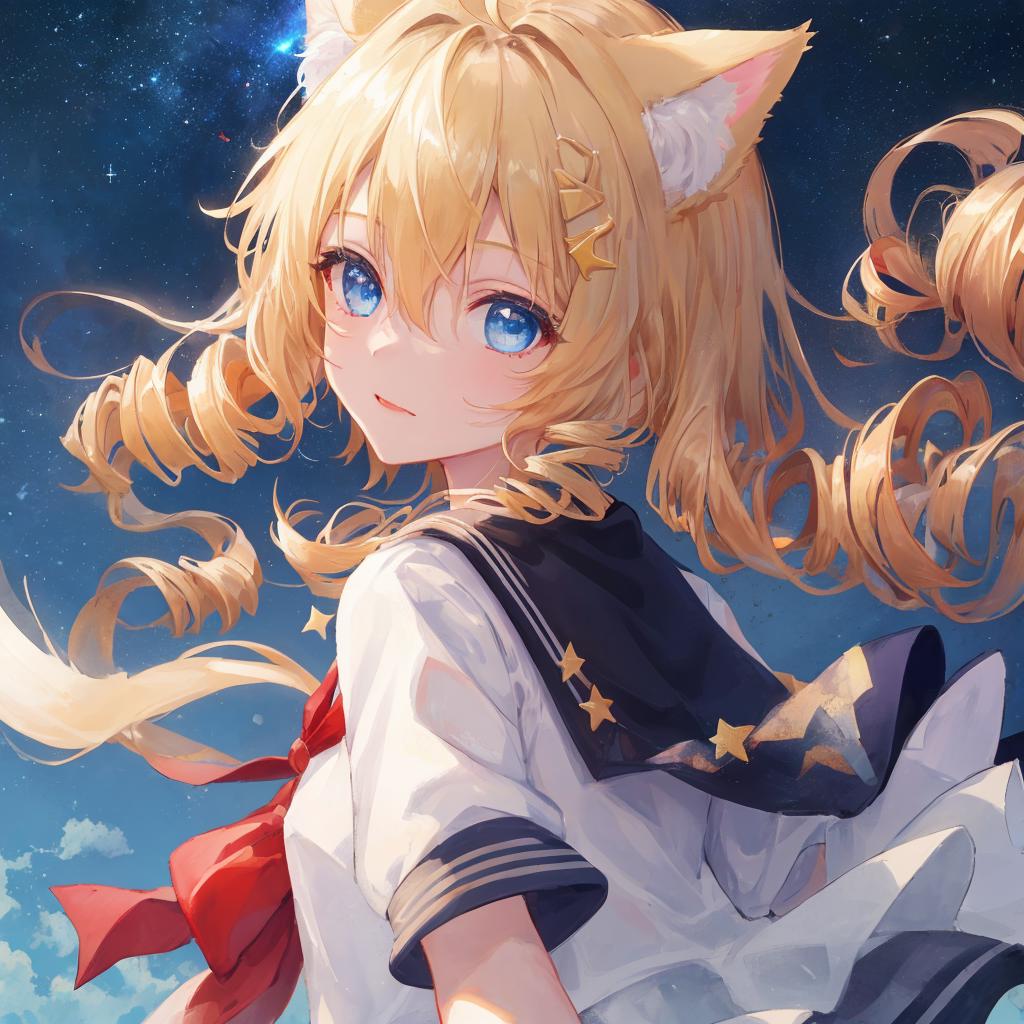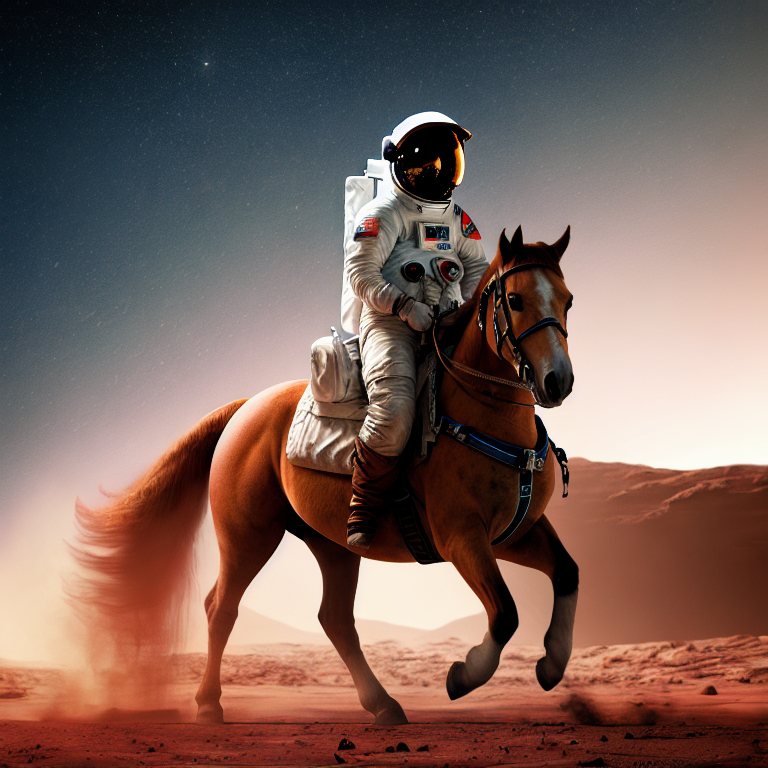Replicategithubwc
Models by this creator

dreamlike-anime

3
The dreamlike-anime model from maintainer replicategithubwc is designed for creating "Dreamlike Anime 1.0 for Splurge Art." This model can be compared to similar offerings from the same maintainer, such as anime-pastel-dream, dreamlike-photoreal, and neurogen, all of which are focused on generating artistic, dreamlike imagery. Model inputs and outputs The dreamlike-anime model takes a text prompt as input and generates one or more corresponding images as output. The model also allows for configuring various parameters such as image size, number of outputs, guidance scale, and the number of inference steps. Inputs Prompt**: The text prompt that describes the desired image Seed**: A random seed value to control the image generation process Width**: The width of the output image in pixels Height**: The height of the output image in pixels Num Outputs**: The number of images to generate (up to 4) Guidance Scale**: The scale for classifier-free guidance, which controls the balance between the input prompt and the model's internal knowledge Num Inference Steps**: The number of denoising steps to perform during image generation Negative Prompt**: Specify things you don't want to see in the output Outputs Output Images**: The generated images, returned as a list of image URLs Capabilities The dreamlike-anime model is capable of generating highly imaginative, surreal anime-inspired artwork based on text prompts. The model can capture a wide range of styles and subjects, from fantastical landscapes to whimsical character designs. What can I use it for? The dreamlike-anime model can be used for a variety of creative projects, such as generating concept art, illustrations, and album covers. It could also be used to create unique, one-of-a-kind digital artworks for sale or personal enjoyment. Given the model's focus on dreamlike, anime-inspired imagery, it may be particularly well-suited for projects within the anime, manga, and animation industries. Things to try Experiment with different prompts to see the range of styles and subjects the dreamlike-anime model can produce. Try combining the model with other creative tools or techniques, such as post-processing the generated images or incorporating them into larger artistic compositions. You can also explore the model's capabilities by generating images with varying levels of guidance scale and inference steps to achieve different levels of detail and abstraction.
Updated 6/29/2024

anime-pastel-dream

2
The anime-pastel-dream model is a Stable Diffusion-based text-to-image AI model designed to create anime-style artwork with a distinct pastel aesthetic. It is created by replicategithubwc. Similar models in this space include cog-a1111-ui, animagine-xl-3.1, and fooocus-api-anime, each with their own unique styles and capabilities. Model inputs and outputs The anime-pastel-dream model takes a text prompt as input and generates a corresponding anime-style image with a pastel color palette. The model allows you to specify the size of the output image, the number of images to generate, and various other parameters to control the style and quality of the output. Inputs Prompt**: The text prompt describing the image you want to generate Seed**: A random seed value to control the randomness of the output (leave blank to randomize) Width/Height**: The size of the output image in pixels Num Outputs**: The number of images to generate Guidance Scale**: A value to control the influence of the text prompt on the output Negative Prompt**: Text describing things you don't want to see in the output Num Inference Steps**: The number of steps used to generate the output image Outputs Output Images**: One or more images generated based on the input parameters Capabilities The anime-pastel-dream model is capable of generating high-quality, anime-style artwork with a distinctive pastel color palette. The model can capture a wide range of scenes and subjects, from characters and portraits to fantastical landscapes and environments. What can I use it for? You can use the anime-pastel-dream model to create unique, visually striking artwork for a variety of applications, such as illustrations, concept art, and even product design. The pastel aesthetic of the generated images could be particularly well-suited for projects targeting a younger or more whimsical audience, such as children's books, mobile games, or social media content. Things to try Experiment with different prompts and input parameters to see the range of styles and subjects the anime-pastel-dream model can produce. Try combining it with other models, such as gfpgan for face restoration, to enhance the quality and realism of the generated artwork.
Updated 6/29/2024

neurogen

1
The neurogen model is a Stable Diffusion-based AI model developed by replicategithubwc for generating "splurge art". It shares similarities with other AI models like dreamlike-photoreal, anime-pastel-dream, and nebul.redmond, which also focus on producing artistic, surreal, or dreamlike imagery. Model inputs and outputs The neurogen model takes in a text prompt, along with various parameters to control the output, such as the image size, the number of inference steps, and the guidance scale. The model then generates one or more images based on the provided inputs. Inputs Prompt**: The text prompt that describes the desired image Seed**: A random seed value to control the randomness of the generated image Width/Height**: The desired dimensions of the output image Num Outputs**: The number of images to generate Guidance Scale**: A parameter to control the influence of the text prompt on the generated image Negative Prompt**: Text to specify things the model should not include in the output Num Inference Steps**: The number of denoising steps to perform during the generation process Scheduler**: The algorithm used to control the diffusion process Outputs Image(s)**: One or more generated images that match the provided prompt and other input parameters Capabilities The neurogen model is capable of generating a wide variety of surreal, dreamlike, and artistic images based on the input prompt. It can produce images with a unique, visually striking aesthetic that sets it apart from more photorealistic AI image generation models. What can I use it for? The neurogen model could be useful for creators, artists, and designers who are looking to generate unique, abstract, or conceptual imagery for a variety of applications, such as album covers, book illustrations, marketing materials, or digital art. The model's ability to create visually striking and imaginative images may also make it useful for hobbyists or enthusiasts who enjoy exploring the creative potential of AI-generated art. Things to try One interesting aspect of the neurogen model is its ability to generate images with a strong sense of mood and atmosphere. By experimenting with different prompts and input parameters, users may be able to create images that evoke specific emotions or convey a particular narrative or mood. Additionally, the model's versatility in producing a range of artistic styles, from surreal to dreamlike, presents opportunities for users to explore and push the boundaries of AI-generated art.
Updated 6/29/2024

dreamlike-photoreal

1
The dreamlike-photoreal model is a powerful AI-generated image model created by replicategithubwc for producing "splurge art" - surreal, dreamlike images with a photorealistic quality. This model is similar to other AI image models like anime-pastel-dream, real-esrgan, dreamgaussian, and fooocus-api-realistic, which also specialize in generating unique and visually striking artwork. Model inputs and outputs The dreamlike-photoreal model takes in a text prompt as the primary input, along with several parameters to control the output such as the image size, number of outputs, and guidance scale. The model then generates one or more images that visually interpret the provided prompt in a surreal and dreamlike style. Inputs Prompt**: The text prompt that describes the desired image Seed**: A random seed value to control the image generation Width/Height**: The desired size of the output image Scheduler**: The denoising scheduler to use for the image generation Num Outputs**: The number of images to generate Guidance Scale**: The scale for classifier-free guidance Negative Prompt**: Text describing elements to avoid in the output Outputs Output Images**: One or more images generated based on the input prompt and parameters Capabilities The dreamlike-photoreal model excels at generating highly imaginative, surreal images with a photorealistic quality. It can take prompts describing a wide range of subjects and scenes and transform them into unique, visually striking artwork. The model is particularly adept at producing dreamlike, fantastical imagery that blends realistic elements with more abstract, imaginative ones. What can I use it for? The dreamlike-photoreal model could be useful for a variety of creative and artistic applications, such as generating cover art, illustrations, or concept art for books, games, or films. The model's ability to create visually striking, surreal images could also make it valuable for use in advertising, marketing, or other visual media. Additionally, the model could be used by individual artists or designers to explore new creative directions and generate inspiration for their own work. Things to try One interesting aspect of the dreamlike-photoreal model is its ability to generate images that blend realistic and fantastical elements in unique ways. For example, you could try prompts that incorporate surreal juxtapositions, such as "a photorealistic astronaut riding a giant, colorful bird over a futuristic cityscape." The model's outputs could then be used as the foundation for further artistic exploration or manipulation.
Updated 6/29/2024